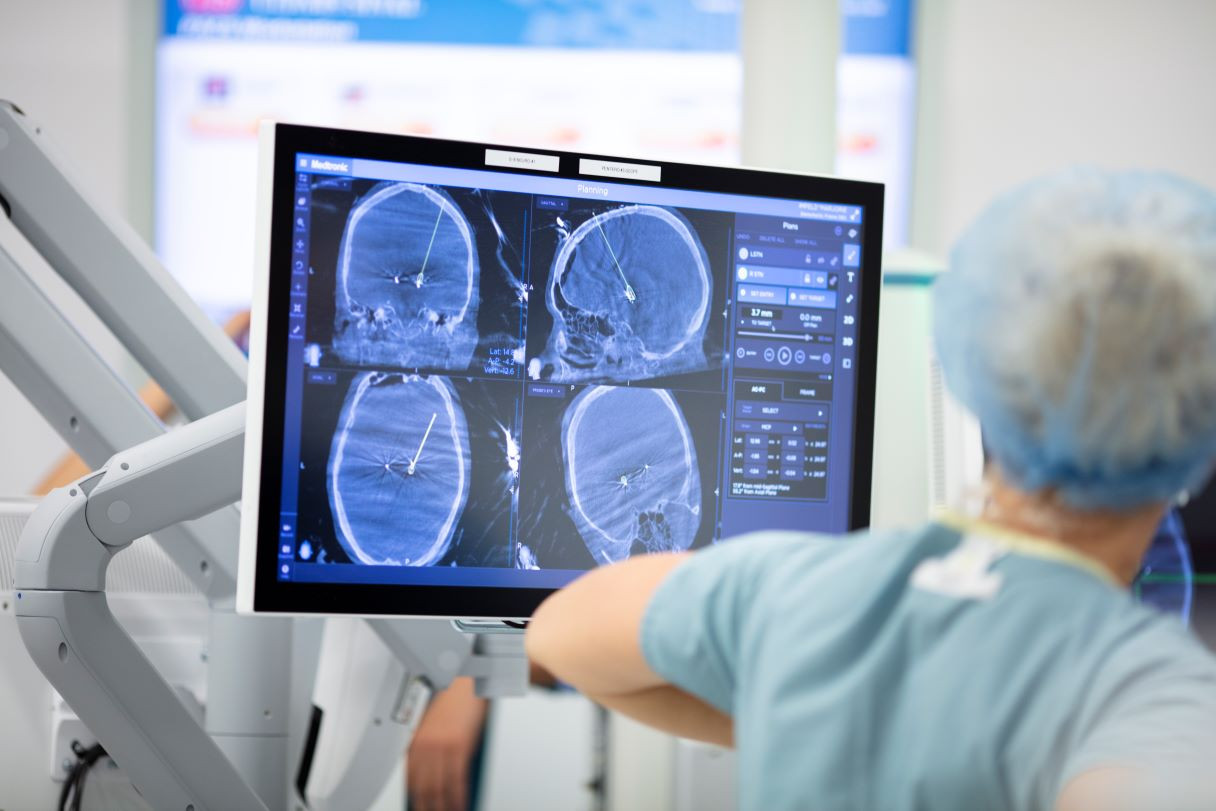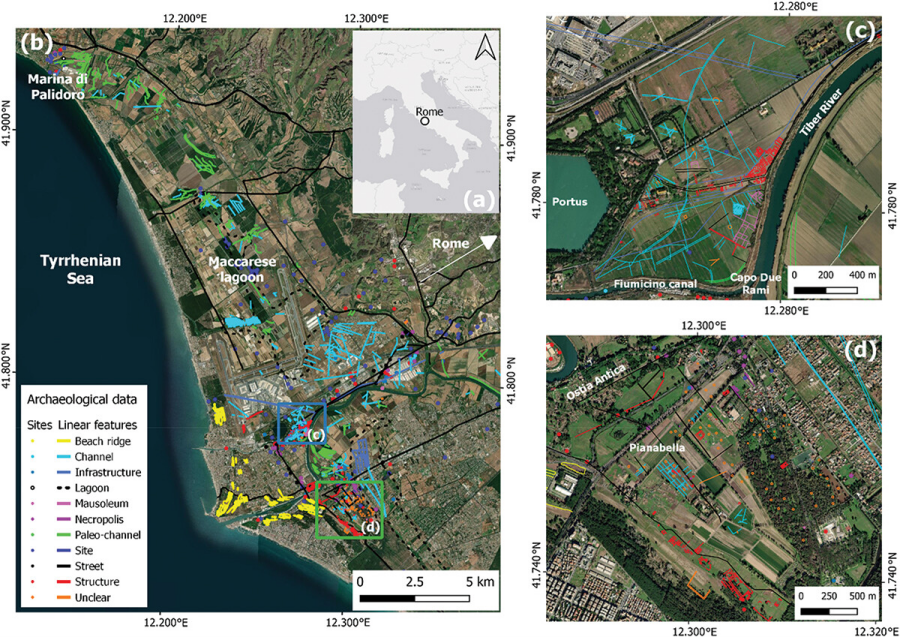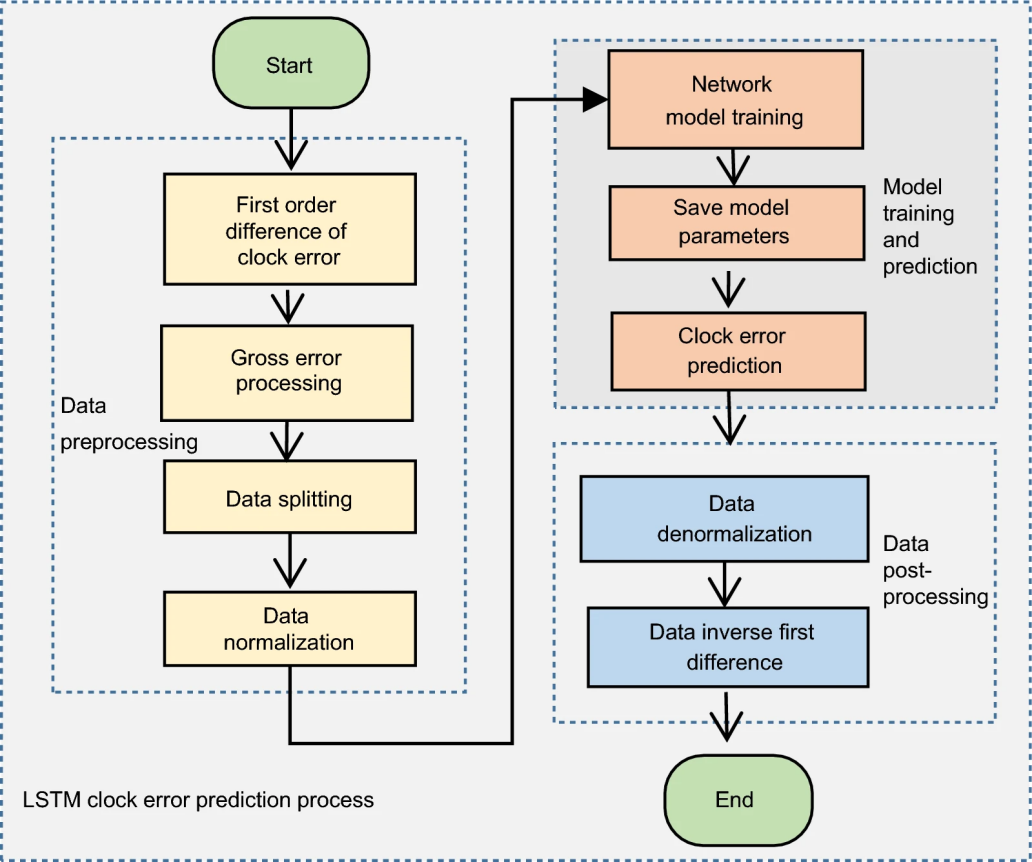Two genes working in tandem play a critical role in shaping the identity and behavior of prostate cancer cells and their response to treatment, UT Southwestern Medical Center researchers report.
Month: June 2024
Researchers debut novel manifold design theory
University of Illinois researcher Kyle Smith, along with doctoral students Md Habibur Rahman and Vu Do, master’s student Colby Warden, and recent graduate Irwin Loud IV (MSME 2023), have published their new manifold design theory (patent pending) in Physics of Fluids.
Comparative Study on Dual vs Single Cardioversion for Atrial Fibrillation in Obese Patients
A team of Ochsner Health cardiologists recently published an article in the Journal of the American Medical Association (JAMA) Cardiology comparing two treatment strategies for patients with atrial fibrillation and obesity.
PCOM South Georgia holds commencement, graduates 59 students
The only medical school in South Georgia graduated its second class of doctors in May.

Can Deep Brain Stimulation Help More Patients?
Deep brain stimulation procedures use electrical pulses to disrupt tiny portions of the brain and halt epileptic seizures or disease-related tremor. The therapy is invaluable, but the basic technology has not advanced in decades.

Wistar Scientists Develop Novel Antibody Treatment for Kidney Cancer
Wistar scientists have built upon BTE technology to develop new and improved recombinant and synthetic DNA versions of therapeutic antibodies that target CA9, called Persistent Multivalent T Cell Engager (CA9-PMTE), that shows promise in pre-clinical models as a potent, long-lasting treatment against ccRCC.
Mapping Lava Flows with Groundbreaking Field Instrument
In Review of Scientific Instruments, researchers from the University at Buffalo develop a tool for measuring the viscosity of lava that could increase our understanding of molten rock as well as better improve models of its movement, giving authorities crucial guidance for keeping people safe.
New RadiologyInfo.org Series Helps Patients Understand Their Exam Reports
RadiologyInfo.org, a leading source of medical imaging information for the general public, has introduced a new series of articles and videos to help patients understand their radiology exam reports.

ASCO: Proton therapy demonstrates advantages in Phase III head and neck cancer trial
According to preliminary data from a multi-institution Phase III trial led by researchers at The University of Texas MD Anderson Cancer Center, intensity modulated proton therapy (IMPT) achieved similar clinical outcomes and offered significant patient benefits when compared to traditional intensity modulated radiation therapy (IMRT) as part of chemoradiation treatment for patients with oropharyngeal (head and neck) cancer.
Stopping a spreading fire: identifying connections between adverse childhood events and substance use disorders
Physical and sexual abuse, having parents who misuse substances, and witnessing violent crime are tragic events that don’t remain locked in a single point in time. Rather, they are termed adverse childhood experiences (ACEs) and 64 percent of American adults who participated in a recent survey reported experiencing at least one ACE prior to turning 18 years old.
U.S. Drug-related Infant Deaths More than Doubled from 2018 to 2022
Drug-involved infant deaths more than doubled (120% increase) from 2018 to 2022, with the greatest proportion of deaths in 2021 (25.8%). The most prevalent underlying causes of death included assault (homicide) by drugs, medicaments and biological substances (35.6%).
AbelZeta announces clinical data showing preliminary anti-tumor activity for C-CAR031, an armored autologous GPC3 CAR-T, in patients with advanced hepatocellular carcinoma, at ASCO Annual Meeting 2024
CAR031 study at 9.03-mo median follow up achieves disease control rate (DCR) of 91.3% and objective response rate (ORR) of 56.5% for patients across all dose levels (DLs) and ORR of 75.0% at DL4

Guardians of the past: satellite SAR and its role in heritage site protection in Europe and China
The utilization of Satellite Synthetic Aperture Radar (SAR) technology is being employed to unveil concealed archaeological features and safeguard heritage sites. The research highlights the significant potential of SAR in detecting buried structures, monitoring environmental threats, and assessing post-disaster impacts. This study showcases various use-cases, including ancient cities and natural reserves across Italy, China, and Russia, demonstrating the versatility and advanced capabilities of SAR in archaeological prospection and heritage conservation.

Gigantic Jurassic pterosaur fossil unearthed in Oxfordshire, UK
A team of palaeontologists has discovered a fossil of a gigantic flying reptile from the Jurassic period with an estimated wingspan of more than three metres – making it one of the largest pterosaurs ever found from that era.

Next-gen satellites: a leap in autonomous timekeeping with LSTM algorithm
A new study has developed a two-level satellite timing system using a sparse sampling Long Short-Term Memory (LSTM) algorithm. This innovative approach significantly boosts the autonomous time-keeping capabilities of next-generation navigation satellites, ensuring more stable and precise space-based time scales. The research addresses critical challenges in satellite navigation by improving long-term clock error predictions.
Rutgers Research Bridging Gaps in Alzheimer’s Risk Among South Asian Populations
Researchers at the Krieger Klein Alzheimer’s Research Center at Rutgers Brain Health Institute are launching a pioneering study to better understand the characteristics that place South Asian populations at heightened risk for Alzheimer’s disease.
GNSS-Reflectometry: A new tool and frontiers in earth observation
A new study has uncovered the potential of Global Navigation Satellite System-Reflectometry (GNSS-R) for monitoring Earth’s surface changes with unprecedented precision. The research delves into the use of GNSS-R for detecting Earth’s surface characteristics, offering a game-changing approach for environmental monitoring and target detection.
Space race heats up: advanced electronics cooling systems for spacecraft
A recent review focuses on the development and optimization of thermal management technologies (TMTs) for spacecraft electronics. These technologies address the challenges of heat acquisition, transport, and rejection in the harsh space environment. The review aims to guide future spacecraft thermal management systems, ensuring the reliability and performance of space missions.

Space race heats up: advanced electronics cooling systems for spacecraft
A recent review focuses on the development and optimization of thermal management technologies (TMTs) for spacecraft electronics. These technologies address the challenges of heat acquisition, transport, and rejection in the harsh space environment. The review aims to guide future spacecraft thermal management systems, ensuring the reliability and performance of space missions.
Space race heats up: advanced electronics cooling systems for spacecraft
A recent review focuses on the development and optimization of thermal management technologies (TMTs) for spacecraft electronics. These technologies address the challenges of heat acquisition, transport, and rejection in the harsh space environment. The review aims to guide future spacecraft thermal management systems, ensuring the reliability and performance of space missions.
Space race heats up: advanced electronics cooling systems for spacecraft
A recent review focuses on the development and optimization of thermal management technologies (TMTs) for spacecraft electronics. These technologies address the challenges of heat acquisition, transport, and rejection in the harsh space environment. The review aims to guide future spacecraft thermal management systems, ensuring the reliability and performance of space missions.
HKIAS e-newsletter 2024 June Issue – Out Now!
We are delighted to share with you a new issue of HKIAS e-newsletter which aims to keep you connected, engaged, and well-informed about the latest updates and developments of HKIAS.
5-Minute Test Leads to Better Care for People with Dementia in the Primary Care Setting
The underdiagnosis of dementia, especially among Black and Hispanic patients, is a long-standing challenge in medicine.
Summer droughts in Northern hemisphere increasingly likely as seasonal streamflows change
Declining snowfall is changing the seasonal patterns of streamflow throughout the Northern hemisphere boosting chances of water shortages in the summer, scientists have found.
NUS researchers develop new aerogels for radiative cooling and the absorption of electromagnetic waves
Scientists from the National University of Singapore have developed innovative aerogels for radiative cooling and electromagnetic waves absorption. Using plastic waste, the team engineered thin-film aerogels that function as thermal insulators and radiative coolers. These aerogels can be applied to the roofs of buildings to reduce indoor temperatures.
Zespri Paves the Way to Brighter Lives Through Nurturing Healthy Eating In Children
Zespri explores the impact of fruit and vegetable consumption on children’s wellbeing in world-first childhood dietary intervention study.
Human activity contributed to woolly rhinoceros’ extinction
Researchers have discovered sustained hunting by humans prevented the woolly rhinoceros from accessing favourable habitats as Earth warmed following the Last Ice Age.
Increased risk of homelessness for youths growing up in foster homes
New research from the University of South Australia (UniSA) and Curtin University finds that up to 36% of young people leaving foster homes in Australia wind up homeless – compared to less than 10% of the general youth population.
Stepping Up Summer Fun: the Cancer Research – Scholarship and Training Experience in Population Sciences (C‐STEPS) Program
Over the last two decades, strides in cancer prevention, earlier detection, and novel treatments have reduced overall cancer mortality; however, cancer health disparities (CHD) persist among demographically diverse and intersecting populations.
Cal State Fullerton Celebrates its Class of 2024
Elated cheers erupted as Cal State Fullerton graduates crossed the stage over 12 Commencement ceremonies May 20-23 in Titan Stadium and on the intramural field.
Sunshine spurs spending: Investors bet big on sunny days
New research by the University of South Australia has found a connection between pleasant weather conditions and higher investment in lottery-like stocks.
Summer holidays aren’t all fun and games for children’s fitness
The summer holiday break is often considered a time of fun and relaxation for school children, but hand in hand with a respite from routine comes an increase in sedentary behaviour and screen time, and in turn, poorer health and academic outcomes.
Mental health care still majority of telehealth visits
An analysis of the 2021 Medical Expenditure Panel Survey (MEPS) found that while only 9.6% of health care visits took place via telehealth, 43.2% of those visits were to psychiatrists.
Screening for prostate cancer with first-line MRI less cost-effective than first-line PSA testing
A cost-effectiveness analysis found that screening for prostate cancer using biparametric magnetic resonance imaging (bpMRI) as a first-line approach is less cost-effective than first-line prostate-specific antigen (PSA) testing with second-line multiparametric MRI (mpMRI).
ACP Recommends AI Tech Should Augment Physician Decision-Making, Not Replace It
The use of artificial intelligence (AI) in clinical health care has the potential to transform health care delivery but it should not replace physician decision-making, says the American College of Physicians (ACP) in a new policy paper published today.
Surgical Infection Society Hosts Annual Meeting 2024 in Miami, Florida
The Surgical Infection Society (SIS), the premier organization dedicated to promoting surgical infection control and science, is proud to announce the launch of its Annual Meeting 2024. The event will take place from Wednesday, June 5, through Friday, June 7, in Miami, Florida.
‘Maximize their potential’: Canisius’ IAR shows pivotal results on new autism research
Inside of Science Hall at Canisius University sits the Institute of Autism Research, also known as the IAR. The institute’s work is dedicated to understanding autism and helping individuals and families affected by autism.
Research shows GLP-1 receptor agonist drugs are effective but come with complex concerns
Studies from multiple UChicago experts show that while GLP-1RA drugs are extremely effective for weight loss and Type 2 diabetes treatment, there’s no one-size-fits-all solution and physicians and patients have to consider issues like cost and side effects.
How to learn about a world-class double bass? Give it a CT
Penn Medicine helps bridge medical science with the arts in the world’s first project to image double basses.
Healthcare tip sheet: Topics for June & July – Ochsner Health experts available
As you plan for upcoming healthcare coverage in June and July, Ochsner Health has medical experts on standby to the discuss the timely and relevant topics listed below. June: Early signs of dementia you need to know– Dementia is not…
Traffic Speeds Decrease When Bike Lane is Present
Rutgers University–New Brunswick researchers conducting a study at a high-traffic intersection in a Jersey Shore town have found that the installation of a bike lane along the road approaching the convergence reduced driving speeds.
Deciphering the Functions Encoded in Phage Genomes
Bacteriophages are the most common biological entities in microbial communities, but it has been challenging to study their biology. As a result, the genomes of most phages contain many genes of unknown function. In this study, researchers developed a new CRISPR-based technology to reduce the activity of genes in phages to determine if those genes are essential.
Societal and biological factors both contribute to mental health issues in the wake of COVID-19
Healthcare teams and researchers have documented an increase in mental health issues since the beginning of the COVID-19 pandemic. UChicago experts explore these trends and discuss how biological and societal factors alike can contribute.
Personalized oxygenation could improve outcomes for patients on ventilators
Researchers used a machine learning model to predict personalized oxygenation targets. Data analysis revealed that mortality rates were lower for patients who received the oxygen level predicted to be most beneficial for them.
Dr. Estelamari Rodriguez Honored as GRACE Patient Educator of the Year
In recognition of her work breaking down language barriers around the world by creating Spanish-language educational content about lung cancer for patients and caregivers, Sylvester Comprehensive Cancer Center’s Dr. Estelamari Rodriguez has been honored as GRACE Patient Educator of the Year.
Meditating with headband that tracks brain activity may improve surgical recovery in patients with Cushing’s
Patients with Cushing’s syndrome who are recovering from surgery and wear a headband that tracks brain activity while they meditate may have less pain and better physical functioning compared with patients not using the device, suggests a study being presented Monday at ENDO 2024, the Endocrine Society’s annual meeting in Boston, Mass.
Early menopause linked to greater risk for breast, and possibly ovarian cancer
Some women who experience menopause early—before age 40—have an increased risk for developing breast and ovarian cancer, according to research being presented Monday at ENDO 2024, the Endocrine Society’s annual meeting in Boston, Mass.
Low socioeconomic status raises pregnant women’s risk of exposure to thyroid-disrupting chemicals
Exposure to some endocrine-disrupting chemicals (EDCs) that harm the thyroid gland has increased over the past 20 years among U.S. women of childbearing age and pregnant women, especially among those with lower social and economic status, a new study finds. The results will be presented Monday at ENDO 2024, the Endocrine Society’s annual meeting in Boston, Mass.
Type of weight loss surgery women undergo before pregnancy may influence children’s weight gain
The type of weight loss surgery women undergo before becoming pregnant may affect how much weight their children gain in the first three years of life, suggests a study being presented Monday at ENDO 2024, the Endocrine Society’s annual meeting in Boston, Mass.
Stony Brook University Appoints Dr. Michael Kinch as Inaugural Chief Innovation Officer
Stony Brook University announced today that Michael Kinch, PhD, has been appointed as the inaugural chief innovation officer (CINO) for the university.